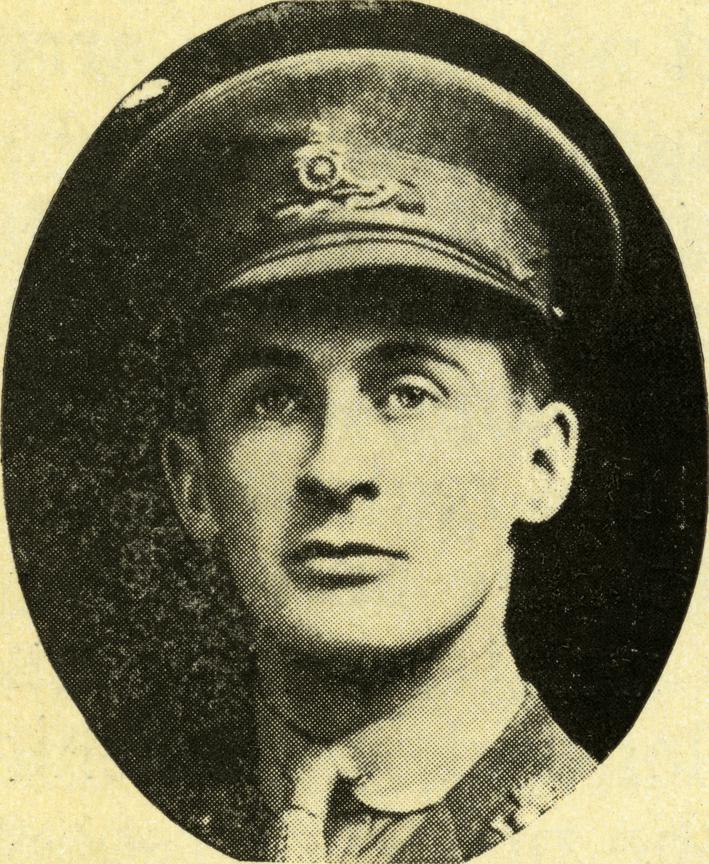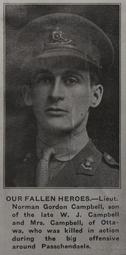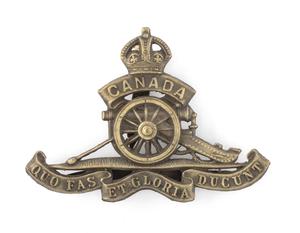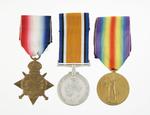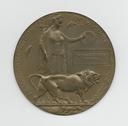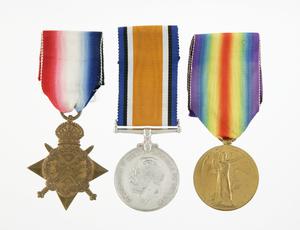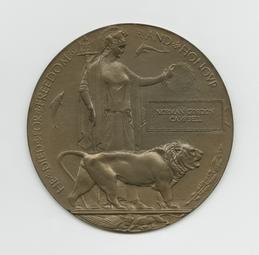Unit
10th Brigade
Branch
Canadian Field Artillery
Service Component
Canadian Expeditionary Force
Service Number
40387
birth
1892/02/10
Ottawa, Ontario, Canada
death
1917/11/10
Passchendaele, Belgium
grave
Vlamertinghe New Military Cemetery, Belgium
Gender
Male
Norman Gordon Campbell was born in Ottawa, Ontario, on 10 February 1892. He was the eighth child of William J. and Sarah Campbell. His father was a boiler maker and had served on the Ottawa City Council.
Campbell was a student when he enlisted in the 2nd Battery, Canadian Field Artillery (CFA) at Valcartier Camp, in Quebec, on 22 September 1914. He sailed to England as a member of the First Contingent of the Canadian Expeditionary Force on 3 October 1914. After training on Salisbury Plain for four months, the Contingent was shipped to France in February 1915.
Campbell was present at the Second Battle of Ypres (22–25 April 1915) and other early battles in which the 1st Brigade CFA (the large unit to which his battery belonged) was involved, but nothing is currently known about his personal experiences of these engagements. On 10 February 1916, he was promoted to the rank of bombardier (an artillery unit rank equivalent to the infantry rank of corporal).
Two months after receiving the promotion, Campbell was sent to Shorncliffe Camp, in Kent, England, having been recommended for a lieutenant’s commission. He received his commission on 24 April 1916 and pursued his officer’s training with the CFA’s reserve brigade at Shorncliffe until being posted to the 41st Battery, CFA at Camp Bramshott, a Canadian military facility in Hampshire, on 4 July 1916. The 41st Battery was part of the 8th Brigade, CFA, which in turn was part of the 3rd Divisional Artillery. Eleven days later, Campbell and his unit were shipped to France for active service.
Campbell’s stay in France was not destined to be a long one. On 29 July 1916, he was wounded in the head while serving near Ypres. The wound was initially described as severe, and it was feared that a shell fragment had penetrated his skull. As a result, after initial treatment and stabilization at the No. 14 General Hospital, Campbell was shipped to England for further treatment. X-rays taken at the 2nd London General Hospital in Chelsea showed no evidence of metal in the skull, of a skull fracture or hemorrhaging. Campbell was discharged from hospital on 17 August 1916.
While Campbell’s wound was not as severe as had first been feared, it is evident that the experience shook him. When he was discharged, he was granted three months’ sick leave in Canada, so that he could recuperate from his wound and “the stress of long service in France”.
Campbell returned to England in November 1916 and rejoined his unit in France in late January 1917. While in France, he was rotated through a number of artillery units — during which time he served at the Battle of Vimy Ridge — before be sent to the 1st Army Artillery School in early July 1917. After successfully completing his course, he returned to his unit — by now the 10th Brigade CFA — in time to serve at the Battle of Hill 70 (15–25 August 1917).
Campbell was killed by enemy shell fire on the afternoon of 10 November 1917, during the Battle of Passchendaele. At the time, he was directing his own artillery battery’s fire against a German counterattack.
Norman Gordon Campbell is buried in Vlamertinghe New Military Cemetery, in Belgium.

